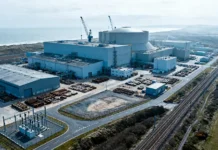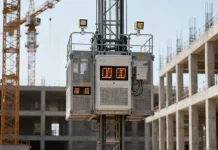Spanning a staggering 3.8 million square miles, the United States offers its citizens the freedom to relocate anywhere within its borders. Throughout history, Americans have moved in search of ideal living conditions influenced by personal circumstances and new opportunities.
This constant flux shapes the country’s landscape, significantly impacting the domestic construction industry. From the rise of suburban homes to the growth of metropolitan high-rises, each shift in relocation trends presents a new challenge and opportunity for the construction sector.
This guide delves into what these trends reveal about the construction industry’s current state, so keep reading to learn more.
Understanding Relocation Trends
According to the Census Bureau, the number of people who moved across states in the US rose from 7.4 million in 2019 to 7.9 million in 2021. However, it is important to note that inter-state relocations represent only a fraction of the total moving activity. Most relocations occur within states, underscoring the connection between local opportunities and mobility.
While specific figures for within-state relocations are elusive, the pattern suggests they significantly outnumber cross-state moves. This combination of inter and intra-state movement continues to shape the construction industry, influencing demand and growth patterns.
Main Reasons for Relocations
The primary drivers for relocations are often economic. People are drawn to areas with lower taxation, favorable business environments, abundant employment opportunities, and a lower cost of living.
Social reasons also play a pivotal role in relocation decisions. Families tend to move towards regions with strong educational institutions, reliable healthcare systems, robust security measures, and lower crime rates.
Political aspects, including states’ stance on sensitive issues such as abortion policies and LGBTQ+ rights, have also become pertinent relocation factors in recent years. Other considerations may include climatic preferences, proximity to family, or the appeal of a vibrant urban lifestyle versus a peaceful rural setting.
An Overview of State Movements
Available data on relocations paints an intriguing narrative about the ebb and flow of the population across the United States. The southern states have particularly emerged as appealing choices, with Texas, Florida, and Arizona leading in population influx. This migration is bolstered by the region’s favorable economic climate, coupled with the allure of warm weather. Similarly, the Carolinas—North and South—have seen a significant increase in incoming residents.
On the other hand, states like California and New York have observed their highest outbound traffic in recent years. California, known for its high cost of living, and New York, particularly Brooklyn, have had more residents leaving than coming. Individuals looking to make such a move often turn to professionals, such as the top long-distance movers in Brooklyn, to ensure a smooth transition.
Impact on the Construction Industry
The construction industry is inherently connected to the population’s ebb and flow. A perfect illustration is New York, a city that has traditionally seen a massive demand for housing. However, recent years have seen a shift, with more people moving out of the city, resulting in decreased construction demand.
Construction companies follow the money, so southern cities like Texas, Florida, and Arizona, which have been on the receiving end of this population shift, have seen a boom in the construction industry. According to the US Census Bureau, Texas added 373,965 residents in 2020. This influx has spurred a surge in construction projects, primarily residential, to accommodate the growing population.
Simultaneously, the movement from cities to more rural settings is a noticeable trend. Small towns like Bozeman, Montana, and Bend, Oregon, are experiencing a surge in demand for housing, leading to a transformation in their construction industries.
However, this relocation trend has hurt the construction industry in outbound cities like New York and California. They are witnessing a downward trend, leading to job losses and reduced construction projects.
Conclusion
Relocation trends provide a valuable insight into the dynamic nature of the construction industry. The shifting patterns of population movement across states not only reveal individual preferences and economic driving forces but also directly impact how and where construction projects unfold.
It is crucial that builders and contractors stay abreast with these trends to capitalize on arising opportunities and navigate potential challenges effectively. After all, understanding where people are moving is indispensable for outlining where to make concrete residential plans you can build upon.
































